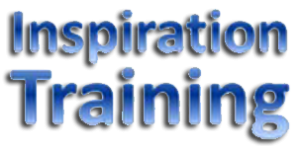E-Learning took the world by storm since the COVID-19 pandemic outbreak. And while it is not an entirely new system, it drove many traditional institutions to adapt and go digital. This move was also an initiative to curb the spread of the coronavirus. Meanwhile, most institutions that offered e-Learning courses pre-pandemic thrived. They are even positioned to continuously boom even after the lockdown. However, there are still those who can’t grasp how this concept of online learning works. That said, this post will discuss how e-Learning courses work. You will also learn more about how you can and cannot benefit from it, including the characteristics that make e-Learning courses successful.
E-Learning took the world by storm since the COVID-19 pandemic outbreak. And while it is not an entirely new system, it drove many traditional institutions to adapt and go digital. This move was also an initiative to curb the spread of the coronavirus.
Meanwhile, most institutions that offered e-Learning courses pre-pandemic thrived. They are even positioned to continuously boom even after the lockdown. However, there are still those who can’t grasp how this concept of online learning works.
That said, this post will discuss how e-Learning courses work. You will also learn more about how you can and cannot benefit from it, including the characteristics that make e-Learning courses successful.
What Is E-Learning?
Electronic learning, or e-Learning, is a learning system that can be accessed by users or learners using technology, usually the internet, to gain skills or knowledge via their preferred electronic devices. E-Learning makes it possible for both students and instructors to learn and teach in the same digital space simultaneously, wherever or whenever they may be. Best of all, it has the same value as that of on-campus programmes.
There are various e-learning platforms. Such platforms include Massive Online Open Courses (MOOCs), virtual learning environment (VLE), video streaming services, virtual instructor-led training (VILT), discussion boards and forums, and podcasts. Your school, the company you work for, or a distance learning course can offer e-learning courses.
Also known as online education or online learning, this learning method has grown over the years. Its continuous expansion can be attributed to its many advantages that will be discussed below.
Benefits of Taking E-Learning Courses
Among the known benefits of taking e-Learning courses is that it allows people to attend classes from anywhere. Students can also save on costs because they no longer have to commute or rent near their school.
However, this learning system has multiple benefits than you think. We listed more of them below:
e-Learning is self-paced
Even if you are a working professional or a stay-at-home parent, you can still learn new things by taking e-Learning courses. Most courses can be taken whenever and wherever you want, such as when you take a course in Coursera (a form of MOOC). Some e-Learning courses also allow an individualized approach on the way and the time when you want to study.
e-Learning can be fast-paced
Since e-Learning is self-paced, this means that it can also be fast-paced. Compared to traditional courses, this learning system progresses faster. There are e-Learning courses that allow you to skip parts you are already familiar with. You can then quickly move on to the next.
e-Learning content is consistent
When an instructor teaches a course, chances are, the flow and the ideas delivered are different from one class to another. As for e-Learning courses, things are consistent. Consistency is a crucial element that must be considered, especially if it involves training materials that can make or break rigid processes or procedures of a workplace.
e-Learning can be done anywhere, anytime
Learners can take e-Learning courses wherever they may be. Most of the time, it can also be taken depending on the user’s availability. It also allows learners to work on readings or homework in their daily schedules without hindrances.
e-Learning course content is continuously updated
e-Learning course materials are more convenient to update compared to the materials in the traditional education setup. All course authors need is to upload up-to-date course materials to a server, and its users can already access the updated materials. It’s also cheaper compared to reprinting physical materials to that of traditional courses.
e-Learning reinforces lessons better
An e-Learning course author has the control to create materials out of any medium they deem best for a subject. They can use videos, audio, photos, slides, or other interactive mediums. Using any of these enables users to revisit sections that they found confusing the first time it was introduced to them.
Limitations of E-Learning
e-Learning courses are generally advantageous. However, this learning system has its fair share of limitations. Initially, you may think that these limitations stem from low-quality course content, poor usage of tools, and underutilization of other resources. While this is true, there are still some limitations that you may be unaware or unconscious of while taking your e-Learning courses.
These are just some of the following you may have overlooked:
It can never replace human contact.
Why? Because of one thing: it’s not human. The first few months of taking e-Learning courses may still be engaging, fun even. It is also convenient for most people since it does not require contact. However, as social beings, we will eventually feel worn out after spending most of our time in a virtual environment.
It can pose health hazards.
Eye strain, stress, tension headache, muscle pain—these are just some of the negative effects of prolonged screen time. It can also affect your posture and other physical problems that will gradually become detrimental to your overall health.
It demands self-discipline and self-motivation.
No one is there to remind you that you need to study certain materials or do homework. You are also in the comfort of your home, where the bed and other means of entertainment are within reach. If you lack self-discipline, then you will certainly not get your money’s worth.
It can be challenging to access.
Most e-Learning courses are dependent on internet connection. But some learners live in an area where the internet connection is not stable. In addition, not everyone is privileged enough. Some even resort to internet cafes and public Wi-Fi, which can be inconvenient at some point.
It may not work for everyone.
Let’s be honest: online education is not for everyone. There will always be a demographic who will find this learning setup inconducive for learning. Although there are ways to make e-Learning courses cater to all learning types, you can’t control or dictate how a person learns.
E-Learning Categories
There are three e-learning categories that you will most likely encounter: asynchronous, synchronous, and blended learning.
Asynchronous Learning
This category of e-Learning allows learners to take a course at their own pace. There is no need for instructors and learners to be online and interact at the same time. Learners under this e-Learning course go through forums, recorded lectures, podcasts, and self-paced modules, among others.
Asynchronous learning is perfect for you if you have obligations and other hindrances that make it impossible for you to go on synchronous courses. However, among its downsides is that if you have questions for the instructor, it will be difficult for you to answer in real-time.
Synchronous Learning
The term synchronous has Greek roots, which mean “occurring at the same time.” And for an e-Learning course to be synchronous, it should involve an instructor teaching a group of learners simultaneously. Learners under this category use tools such as online classrooms, video, and audio conferencing, live webinars, and other online collaboration tools.
Compared to asynchronous, this category of e-Learning course allows learners to give feedback or raise questions in real-time, and the instructor can entertain these right away. But similar to asynchronous e-Learning courses, the synchronous category is not without its disadvantages. And this includes the difficulty in making a group of learners commit to a course that will be delivered simultaneously.
Blended Learning
If you want to get the best of both worlds, then blended learning is the best option out there for you. This category allows you to incorporate both tools under synchronous and asynchronous learning and create e-learning courses that meet different learners’ needs.
Most blended learning programmes begin with a live session led by an instructor via video conferencing, a tool used for synchronous learning. The asynchronous aspect comes in when the instructor gives the students homework and additional modules that they need to work on until the next live video conference.
One drawback of this learning category is that it can be too much work for the instructor. On the other hand, students will eventually feel burdened with their load.
Essential Characteristics of a Successful E-Learning Course
Learner satisfaction is what makes any e-Learning course successful. Creating e-Learning courses is no rocket science, but it must possess specific characteristics to impact students’ satisfaction.
That said, below are the essential characteristics that every e-Learning course should at least have to attain success:
1. It follows a set of objectives, structure, and cohesion
Regardless of whether it’s a traditional or an e-Learning course, it is always crucial to create a clear learning objective. It will be easy for both the course author and learners to understand the subject at hand with clear goals. You can start by asking yourself what you want your learners to gain after going through one of your materials or after the course itself.
Once you lay out the precise objectives, the course author can create structured and cohesive course content. Structured content means that every material or activity flows from one to another, and it will make sense no matter how you look at it. It will also be free of parts that are redundant or useless for the users.
2. It contains relevant content that meets learners’ needs
To develop relevant course content, you must work with Subject Matter Experts or SMEs. An SME will ensure that your content is relevant and that it meets the needs of the learners. In addition, it should also challenge the learners in a way that encourages them to learn more.
Imagine picking a non-fiction book with content that is too good to be true—would you still want to keep reading? Now, imagine an e-Learning course in place of the deceiving non-fiction book. Do you think the learners who enrolled in that course will endure until the end, knowing it does not offer what they were looking for? Well, you already know the answer.
3. It is appealing and user-friendly
The term content does not only pertain to texts but also includes images, videos, animations, or audios. To make a course content appealing, you need to create a balance among these elements. The absence of this balance makes or breaks the impact of these materials on the learners.
In your quest to make your content appealing, do not sacrifice user-friendliness. No matter how attractive your course content may be, it will be pointless if your intended user can’t navigate around any of your materials with ease. Even computer-savvy users won’t endure something too complicated to use.
4. It encourages students to engage actively
Engagement can be tricky when it comes to e-Learning. But once you decide to incorporate interactive elements in your course content, it’s already a guarantee that learners will participate other than simply reading and watching the course content.
Among the interactive elements you can incorporate include polls during webinars, prompts that encourage students to test what they’ve learned, or apply gamification. The point of making interactive a course content interactive is to make learners proactive even if they are taking these courses behind their device screens.
5. It appeals to multiple learning styles
We all learn differently. What works well for you may not work for others. For instance, if you are more of a visual learner, you will find it challenging to study material that mainly contains audio or requires interaction.
There are at least four learners that you should appeal to when making course content: visual learners, audio learners, verbal learners, and kinesthetic learners. You don’t necessarily have to create four different course content; all you need is to strike a balance in your course content.
Start Your Lifelong Learning Journey at Inspiration Training
Learning new skill sets and acquiring certifications is now made easy with today’s tech-driven innovations in our education system. Learning is a lifelong process, but if you want a quality and flexible one, you should consider taking e-Learning courses. To give you a head start, you can begin here in Inspiration Training.
We offer one-on-one tutor-led interactive training that you can take at the pace suited for you. We guarantee that your employees get and retain the best learning experience and ensure that what they will learn is safe and compliant for your business.






